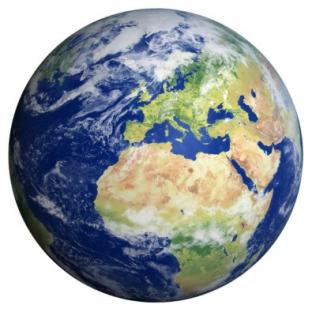Languages are ordered in the table below by numbers of native speakers. Numbers of second-language speakers are given where known. Second language speakers are those whose native language is typically a minority language of the country in which they live and who learn the second language because it is the official national language of the country where they reside.
Top Languages by Number of Native Speakers
Data source: Ethnologue
A striking fact shown in table 1 is that there is a huge disparity between the mean size of languages and the median size. It turns out that 389 (or nearly 6%) of the world’s languages have at least one million speakers and account for 94% of the world’s population. By contrast, the remaining 94% of languages are spoken by only 6% of the world’s people.
Table 2 summarizes the distribution of languages by size. The Count columns give the actual number of languages within the specified population range and the total number of first-language speakers of those languages. The Percent columns give the share of the count for that population range as a percentage of the total number listed at the bottom of the Count column. Note that there are still a few hundred languages for which the Ethnologue does not have a population estimate; the calculation of percentages for speakers is therefore not able to take those languages into account. The Cumulative columns give the cumulative sums of the percentages going from top to bottom in the column.
Table 3 lists the largest languages of the world in descending order of population of first-language speakers. The Primary Country column names the country in which the primary entry for the language is given in Part 1 of the book. The Total Countries column gives the number of countries in which the language is listed either with a full entry or as an immigrant language in the country header. The Speakers column gives the number of first-language speakers in millions. The table rows in italic type represent macrolanguages ;
in these cases the Total Countries and Speakers columns are totals for all the individual languages listed in the macrolanguage entry as members of the macrolanguage. Individual languages that are members of a macrolanguage are not counted in the ranking, but are listed as indented entries below the macrolanguage. Note that the indented listing of individual languages does not include all member languages; it includes only those over the threshold size given in the table caption.
xenesglosses.eu





